Do you want to upgrade your microscope to support new applications or make your current work more efficient? Prior can help to enhance your existing microscope or enable you to develop an imaging system that can fully meet your requirements. These five products can automate focus capture, allow rapid acquisition of 2- and 3-dimensional datasets, or provide an opportunity to develop a bespoke motorized microscope specific to your needs.
Here are five products that Prior offer which can enhance your microscopy work.
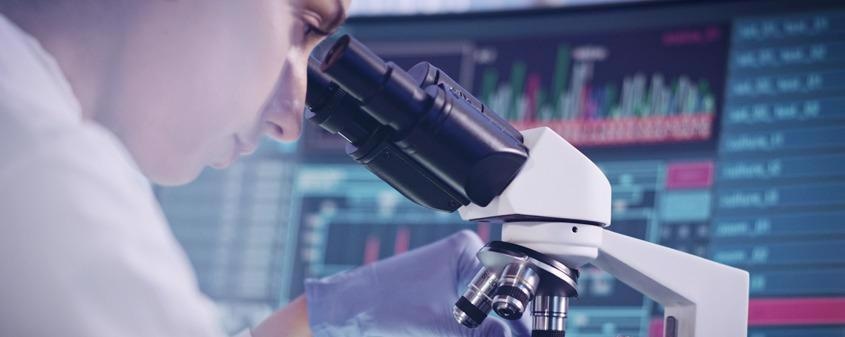
Image Credit: Prior Scientific Instruments Ltd.
1. PureFocus 850 Laser Autofocus
Laser autofocus systems, such as the PureFocus850, are regularly used for materials or biological microscopy. Yet, the PureFocus is not limited to any specific application.
A versatile set of parameters means that the PureFocus can sustain its focus on any given sample in real-time. This is possible regardless of contrast, sample flatness, or image acquisition while utilizing almost any objective when imaging a wide range of samples.
Semiconductor wafers, fixed slides, culture dishes and well plates, films and membranes, pharmaceutical pills are amongst the various sample types that have been successfully tested.
Similarly, home-built research instruments or microscopes produced by major manufacturers can benefit from the PureFocus 850 due to its ability to adapt to almost any infinity corrected optical configuration.
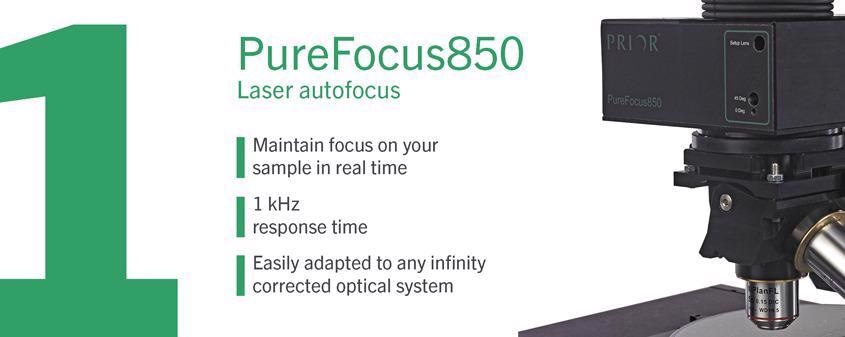
Image Credit: Prior Scientific Instruments Ltd.
2. Nanopositioning Stages
Prior Scientific is a world-leading provider of nanopositioning stages for microscopy. Queensgate SP400/SP600 Nanopositioning Piezo Sample Scanners deliver the quickest step settle times possible – 7 ms for 1 micron, 20 ms for 100 microns.
These systems can also function across ranges of up to 600 microns while retaining high velocities and sub-nanometer resolution. Additionally, they can operate in a constant velocity mode activating cameras at regular intervals.
Applications such as multiphoton imaging can take advantage of these characteristics to produce more precise 3D data in large volumes at a faster rate.
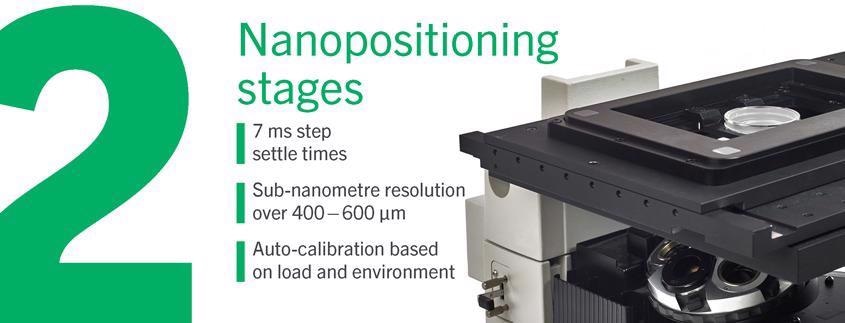
Image Credit: Prior Scientific Instruments Ltd.
3. Nanopositioning Objective Positioners
Queensgate products realize outstanding performance due to their inherently high resonant frequency, enabling them to move quickly without resonance, and low noise electronics around the order of magnitude of a hydrogen atoms width.
The OP400 objective positioner delivers the same outstanding performance as the nanopositioning stages and offers improved linearity and stability. Its 400-micron range is currently facilitating development of a novel innovative correlative light sheet microscopy technique using thicker samples, while its short settle time permits higher volume rates of data acquisition.
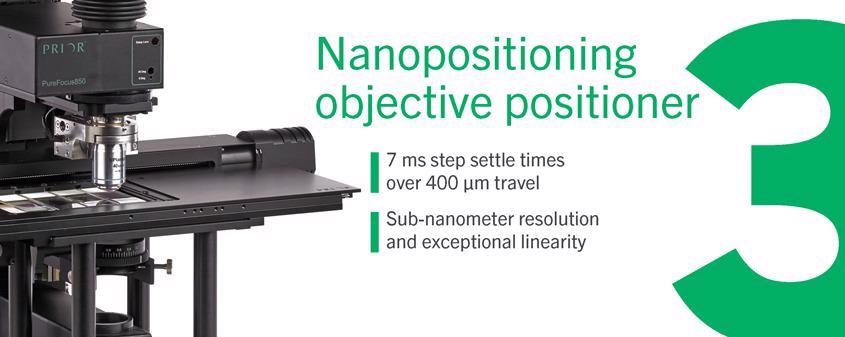
Image Credit: Prior Scientific Instruments Ltd.
4. Linear Stages
Prior’s HLD117 linear stage is known primarily for being a high content screening tool for well plates – frictionless drives that enable exceptionally fast movements and constant velocity scanning. This can be combined with hardware triggering to activate image acquisition at 50nm resolution.
These stages are also frequently used in materials science – 100 nm repeatability facilitates correlative high-resolution imaging with mass spectrometry, and its greater accuracy and resolution are used in high-throughput laser etching applications.
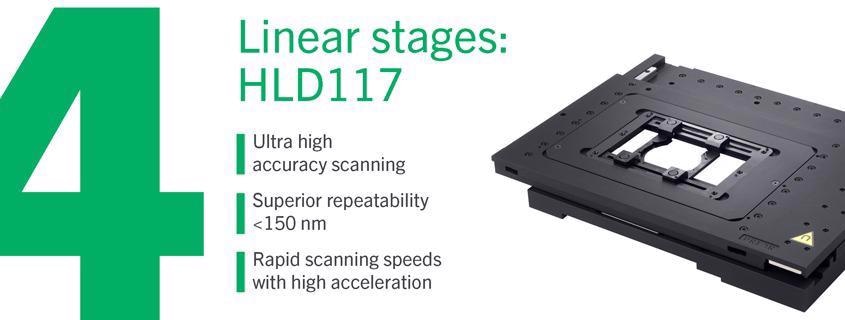
Image Credit: Prior Scientific Instruments Ltd.
5. OpenStand Custom Microscopes
For customized, fully motorized imaging system development, Prior can be your trusted partner. The company has collaborated with industry and academia to produce microscopes to meet particular requirements and needs through OpenStand.
This production-ready platform can be customized with tailored optics, 3-axis motorized travel, illumination, and even robotic sample loaders to produce the optimal system for research or product development.
OpenStand is employed in a diverse set of applications, from innovative digital pathology slide scanning to correlative determination of semiconductors' physical and electrical properties.

Image Credit: Prior Scientific Instruments Ltd.
Acknowledgments
Produced from materials originally authored by Simon Bush from Prior Scientific.
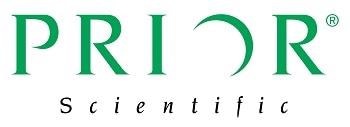
This information has been sourced, reviewed and adapted from materials provided by Prior Scientific Instruments Ltd.
For more information on this source, please visit Prior Scientific Instruments Ltd.